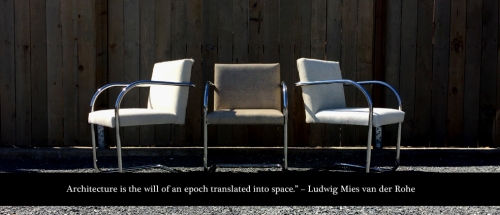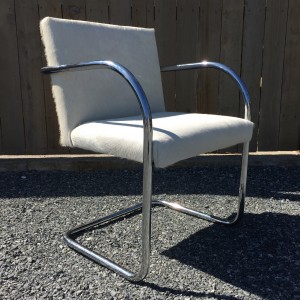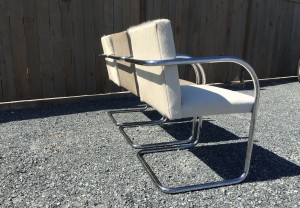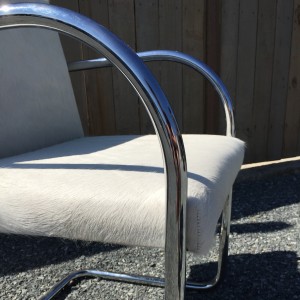LESS IS MORE – A CLOSER LOOK AT MIES VAN DER ROHE’S BRNO CHAIR
by lynnholms
How often do you get the chance to reconnect with the past? Being able to touch something that was designed almost 100 years ago, yet still relevant and appealing today, can skyrocket inspiration in a designer, builder, manufacturer and consumer.
This morning when we stumbled across a Knoll Brno chair, we knew we had to tell everyone about it. As Becky Harris would say, “Oh, I shouldn’t play favorites but… What modern lover doesn’t want a piece of Mies van de Rohe around?”
For those without a designer or architectural eye, the Brno chair may seem like simply that, a chair. But once you take in the chrome finish, exquisite leather, keen detail and mind-boggling physics, what was once a chair becomes a centerpiece in a place we call work or home.
THE DESIGNER
Ludwig Mies van der Rohe, often known simply as Mies, is widely regarded as one of the pioneering masters of modern architecture, alongside Le Corbusier and Frank Lloyd Wright. DWR.com calls his designs “architecture in miniature [and] exercises in structure and materials that achieve an extraordinary visual harmony as autonomous pieces and in relation to the interiors for which they were designed.
THE BRNO CHAIR
Adopting the name of its roots in Brno, Czechoslovakia, van der Rohe’s Brno chair was designed specifically for the Tugendhat House in 1930. The design was adopted shortly after van der Rohe’s creation of the Barcelona chair for the 1929 International Exposition in Barcelona as a modern throne for the king and queen of Spain.
The chair itself is exclusively manufactured by Knoll and, according to The Human Solution, is a “progressive design [which] features a single steel tube that acts as the armrest, frame and chair legs. The comfortable seat and chair back are available in high quality leather or fabric.”
Hive Modern states that the “Brno chair mirrors the ground breaking simplicity of its original environment. A simple profile, clean lines and meticulous attention to detail have elevated the Brno chair to an icon of twentieth century furniture design.”
And this is why we at NW Design Guild absolutely love what we do. By connecting with the past and exploring the ideas and methods of designers, we are able to learn how something was originally built. We can excel in recovery of furniture and pieces that mean the world to someone based on a piece’s history and construction. We have a young team here at NW Design Guild; what an honor to be able to pass on what we have learned from past teachers so that this art may never go extinct.



